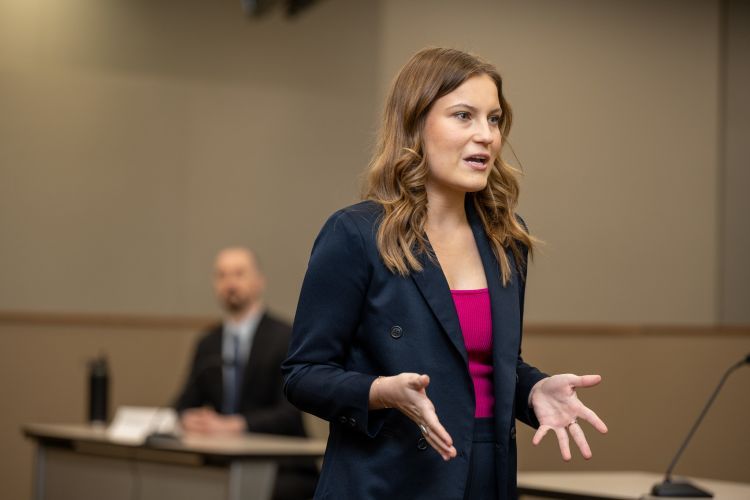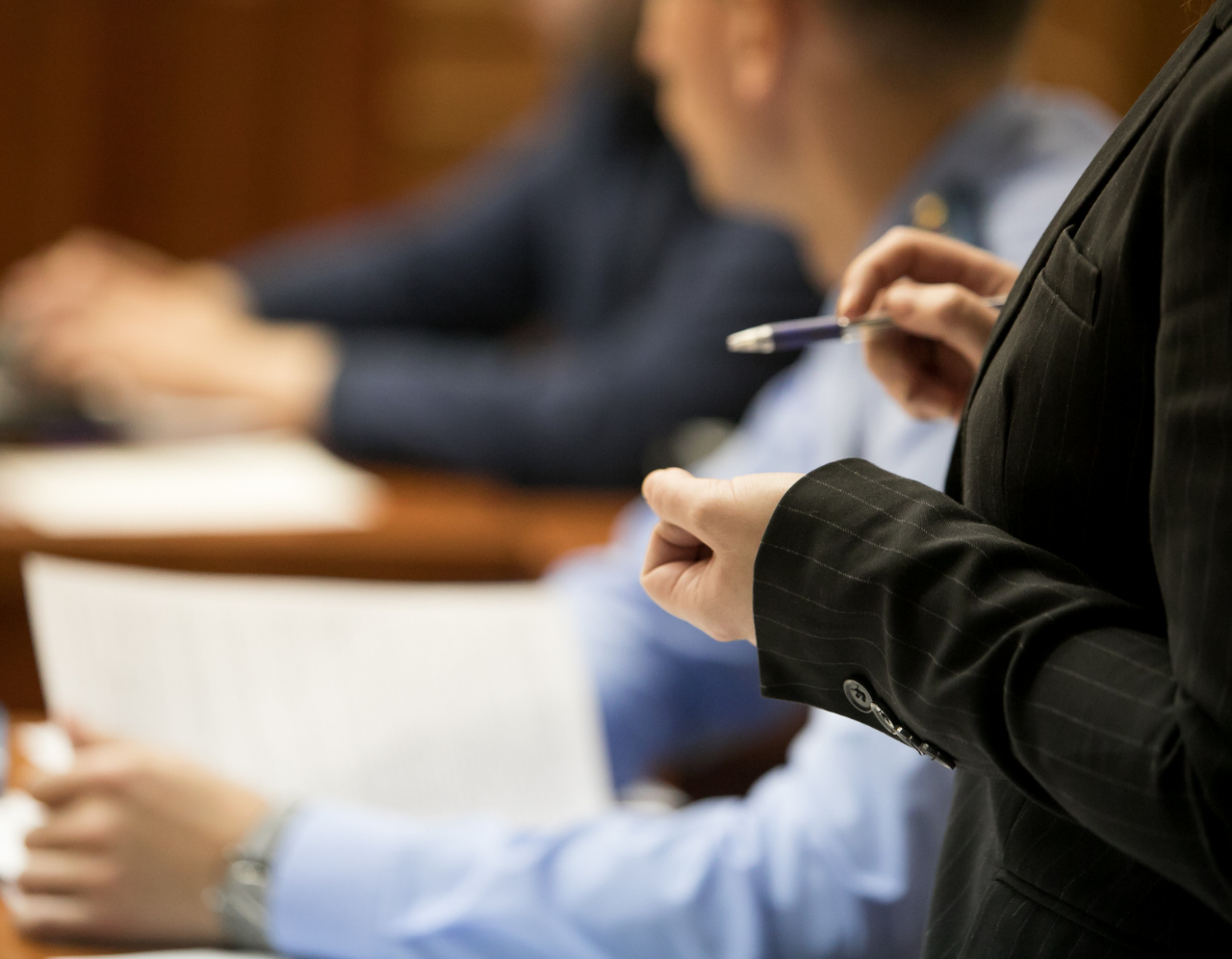Why Your Next Situation Requirements a Strong Trial Presentation: Insights and Techniques for Attorneys
Why Your Next Situation Requirements a Strong Trial Presentation: Insights and Techniques for Attorneys
Blog Article
Navigating the Intricacies of Trial Presentations: Tips for Seamless Distribution and Compelling Arguments
In the world of lawful procedures, the art of test discussion stands as a crucial factor of success. The complexities intrinsic in trial presentations need a delicate balance of strategy, skill, and ability.

Recognizing Trial Objectives
To successfully browse a test, it is crucial to have a clear understanding of the objectives that need to be accomplished. Before tipping right into the court room, lawful groups must define their goals and desired results. These goals function as assisting concepts throughout the trial, forming strategies and affecting decision-making procedures.
Understanding trial objectives involves a comprehensive analysis of the case, legal precedents, and the client's benefits. Trial Presentations. It needs a careful assessment of the truths, determining crucial problems, and expecting potential challenges. By setting measurable and details objectives, lawyers can tailor their arguments and presentations to line up with the preferred results
Moreover, a clear grip of trial objectives allows lawful groups to focus on proof, witnesses, and legal disagreements efficiently. It allows for the advancement of a systematic narrative that reverberates with the judge and court, enhancing the overall case presentation.

Organizing Evidence Efficiently
Having a clear understanding of test goals lays the foundation for organizing evidence efficiently in legal proceedings - Trial Presentations. By aligning the presentation of proof with the preferred outcomes of the trial, legal teams can strengthen their arguments and improve their persuasiveness. One important aspect of arranging evidence is categorization. Organizing evidence based upon styles or relevance to details legal components can help improve the discussion and make intricate info a lot more absorbable for the judge or jury.
One more key aspect in arranging proof effectively is establishing a sensible circulation. Providing evidence in a systematic and consecutive way can aid build an engaging story that supports the lawful debates being made. Furthermore, making use of visual aids such as charts, timelines, or charts can better enhance the organization of evidence and help in making clear complex connections or series of events.
Additionally, making certain that all proof presented is pertinent and admissible to the case is crucial. Inadmissible or pointless proof can interfere with the toughness of the argument and potentially harm the integrity of today party. A meticulous review and option process ought to be carried out to include only the most legally audio and impactful proof in the test presentation.
Crafting Convincing Narratives
Crafting engaging narratives plays a critical function in presenting persuasive arguments during lawful process. A well-crafted narrative has the power to captivate the audience, evoke feelings, and ultimately sway the decision for today party. When constructing a narrative for a test discussion, it is necessary to establish a clear story that highlights vital factors and attaches them in a systematic manner. Begin by outlining the facts of the instance in an engaging fashion, making sure that the sequence of events is easy to adhere to. Present personalities successfully, offering background details that assists the target market comprehend their motivations and actions. Additionally, incorporating dazzling summaries and appealing language can bring the narrative to life, making it extra unforgettable for the discretionary. By weaving together proof, testimony, and legal debates right into a convincing and cohesive story, lawyers can properly promote for their clients and raise the chance of a desirable result in the courtroom.
Mastering Aesthetic Aids
Efficient use aesthetic help is crucial to boosting the impact and clearness of test discussions. Visual aids, when used purposefully, have the power to streamline complex info, strengthen vital factors, and leave a lasting impact on the discretionary. To grasp aesthetic help in test discussions, it is essential to guarantee that they are clear, succinct, and pertinent to the debates being made.
When including aesthetic aids, such as charts, timelines, graphs, or photographs, into my sources a trial presentation, it is vital to keep them visually appealing yet expert. The visuals should complement the verbal arguments, providing a graph of the information being discussed without frustrating the target market with unneeded information.
Additionally, experimenting the visual aids beforehand is critical to ensure a smooth distribution throughout the trial. Familiarizing oneself with the web content, changes, and timings of each aesthetic aid can help maintain the circulation of the discussion and avoid technical problems that might emerge.
Supplying Impactful Closing Disagreements
An engaging closing argument serves as the culmination of a trial discussion, encapsulating the core story and persuading the judge and court towards a positive decision. Begin by detailing the major disagreements helpful resources that sustain your customer's setting, stressing why the evidence provided throughout the test supports your narrative.
Additionally, including psychological allure can better strengthen your closing argument. Ultimately, a well-crafted closing argument ought to leave a long lasting perception, engaging the judge and jury to rule in your client's favor.
Conclusion
In final thought, grasping trial presentations involves understanding objectives, arranging proof, crafting stories, utilizing aesthetic help, and supplying impactful closing debates. By carrying out Click Here these methods successfully, attorneys can provide their case seamlessly and make engaging debates in the court room. It is vital to navigate the complexities of test presentations with accuracy and skill to attain success in lawful process.
By lining up the presentation of evidence with the desired outcomes of the test, legal teams can reinforce their disagreements and improve their persuasiveness (Trial Presentations). To master visual aids in trial discussions, it is essential to guarantee that they are clear, succinct, and pertinent to the disagreements being made
A compelling closing debate serves as the culmination of a test presentation, enveloping the core narrative and persuading the court and court towards a positive decision. Begin by describing the primary arguments that sustain your client's setting, emphasizing why the proof presented throughout the test supports your narrative.In final thought, mastering test presentations includes recognizing goals, arranging evidence, crafting stories, utilizing aesthetic aids, and providing impactful closing arguments.
Report this page